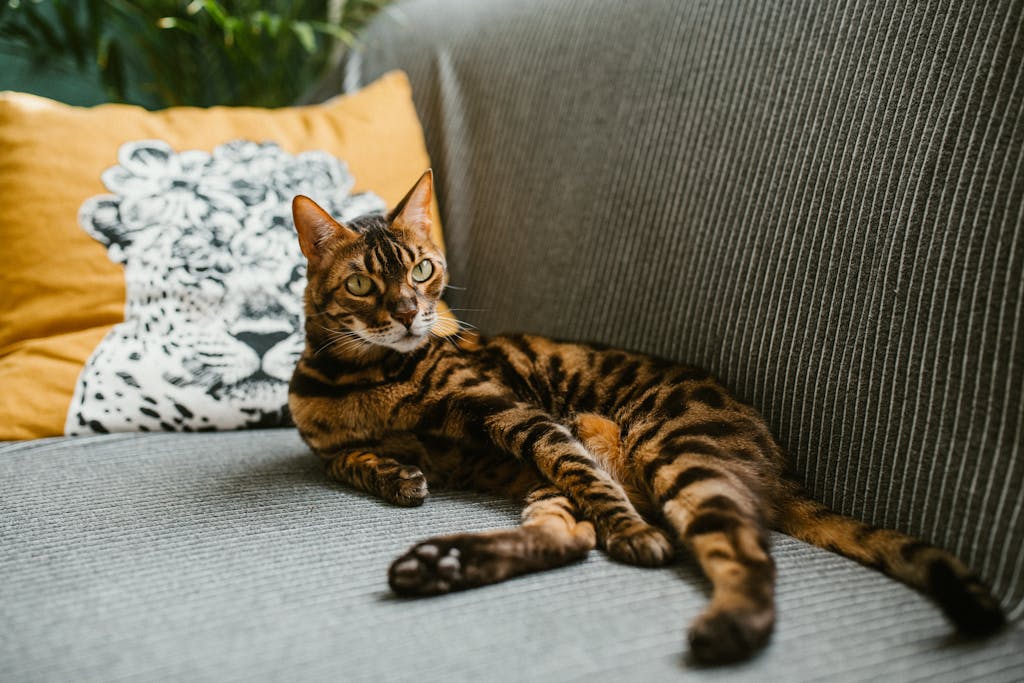
Why Do Cats Knead with Their Paws?
One of the most endearing and curious behaviors exhibited by cats is their tendency to knead with their paws. This rhythmic motion, often accompanied by purring and a contented expression, is a common sight among feline companions. But why do cats engage in this behavior? In this article, we will explore the various reasons behind why cats knead with their paws.
The Instinctual Nature of Kneading
First and foremost, it’s important to recognize that kneading is an instinctual behavior deeply rooted in a cat’s evolutionary history. Kittens instinctively knead their mother’s abdomen while nursing to stimulate milk flow. This action helps them obtain nourishment and creates a sense of comfort and security. As cats grow older, this instinctual behavior often carries over into their adult lives, even in the absence of nursing or the presence of other cats.
Furthermore, kneading is believed to be a remnant of a cat’s wild ancestry. Wild cats would knead grass or foliage to create a soft and comfortable spot for rest or sleep. This behavior served as a way to prepare their environment and make it more suitable for relaxation and protection.
Physical and Emotional Comfort
While kneading may have originated as a practical behavior for survival, it has evolved to serve additional purposes in a domestic cat’s life. One of the main reasons why cats knead is to create a comfortable and cozy space. By rhythmically pushing and pulling their paws against a surface, cats can manipulate their surroundings to their liking. This action helps them soften and mold their sleeping area, making it more suitable for rest and relaxation.
Kneading also has a therapeutic effect on cats. The repetitive motion can provide a sense of physical comfort and relaxation, similar to how a massage can soothe human muscles. The act of kneading releases endorphins, which are natural mood enhancers that promote feelings of pleasure and contentment. This is why cats often display a blissful expression and purr while kneading.
Marking Territory and Communication
Another fascinating aspect of kneading is its connection to a cat’s territorial instincts and communication methods. Cats have scent glands located in their paw pads, and when they knead, they release pheromones onto the surface they are working on. These pheromones act as a form of marking, signaling to other cats that the area has been claimed or is a safe and familiar space. This behavior is particularly evident when a cat kneads on their owner’s lap or a favorite blanket, as they are essentially marking their territory and expressing a sense of ownership.
Furthermore, kneading can also be seen as a form of communication between cats and their human companions. When a cat kneads on their owner, it can be interpreted as a sign of affection and trust. The rhythmic motion and purring create a bonding experience, reinforcing the emotional connection between the cat and their human caregiver.
Emotional Release and Stress Relief
Kneading can also serve as a means for cats to release pent-up emotions and relieve stress. Cats are known to be creatures of habit and routine, and any disruption or change in their environment can cause anxiety and tension. Engaging in kneading helps cats release these emotions and provides a sense of comfort and stability. It can be compared to humans engaging in activities such as knitting or squeezing stress balls to alleviate stress and anxiety.
Additionally, kneading can be a self-soothing behavior for cats. The repetitive motion and the physical contact with a soft surface can have a calming effect, reducing feelings of fear or unease. This is particularly evident in situations where a cat is feeling anxious or uncertain, such as during a visit to the veterinarian or when adjusting to a new home.
Conclusion
While the exact reasons behind why cats knead with their paws may vary from one feline to another, it is clear that this behavior serves multiple purposes. From instinctual nurturing behaviors to emotional comfort and communication, kneading is a fascinating aspect of a cat’s behavior. Understanding and appreciating this behavior can deepen our bond with our feline companions and provide insights into their unique needs and desires.






